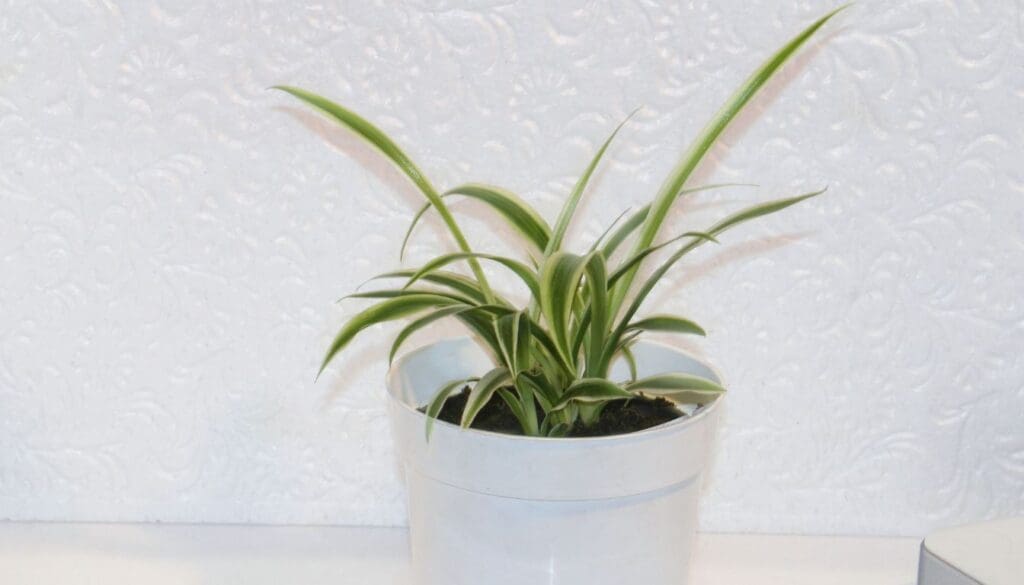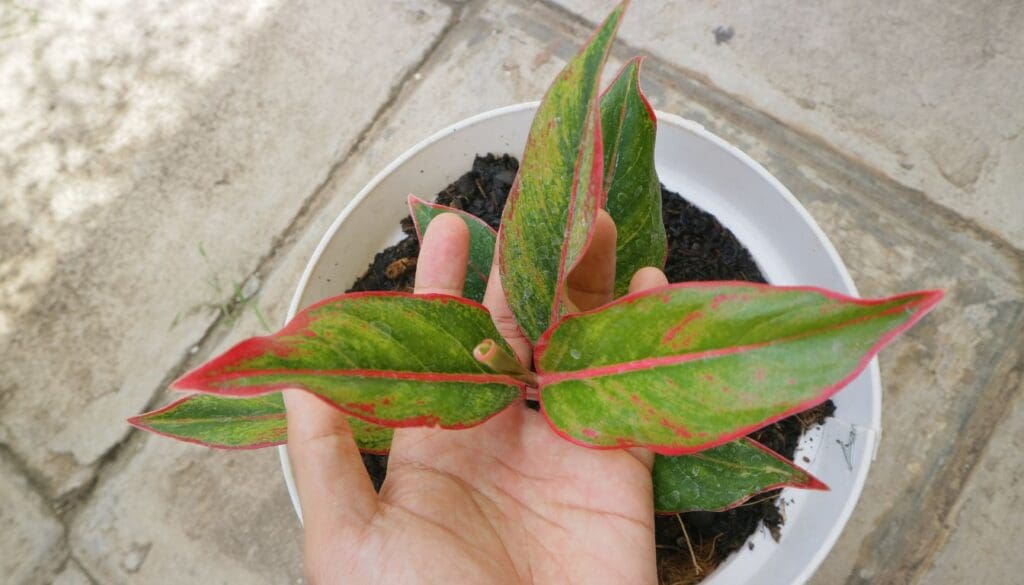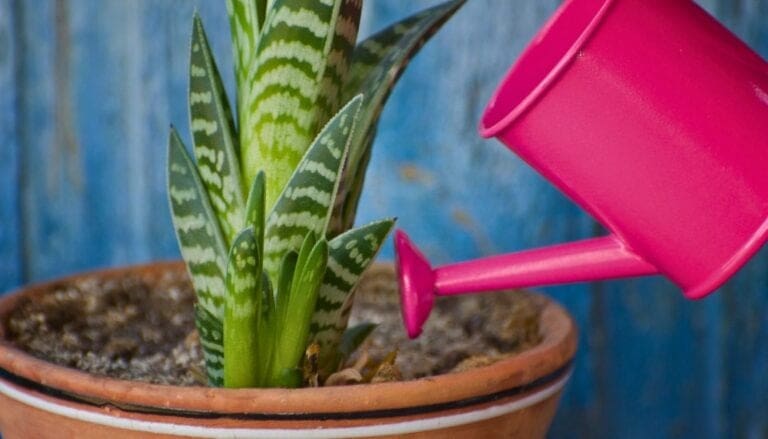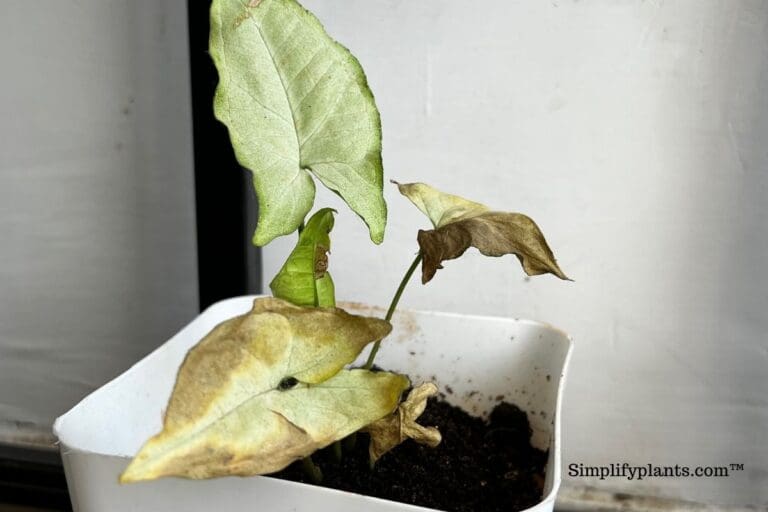6 Signs Your Plant Is Ready to Rest for Fall
As summer winds down, I start paying more attention to my houseplants and garden. The changing weather always seems to have a bigger impact than I expect.
Knowing when my plant is ready to rest for fall helps me keep it healthy and strong. I just want to give my green friends what they need as the seasons shift.
Please note: Simplify Plants is reader-supported. As an Amazon Associate, I earn from qualifying purchases made by our readers with no extra cost added to you all! Some links in the post are affiliate links and I get a commission from purchases made through links in the post.
1) Leaves turning yellow or brown

One of the first things I spot is when my plant’s leaves start turning yellow or brown. It’s usually a sign that the plant is slowing down and getting ready to rest for the cooler months.
When I notice leaves yellowing, I try not to freak out. Honestly, it’s just a normal part of the plant’s life cycle as fall approaches.
Brown tips or edges might show up before whole leaves turn yellow and drop. Sometimes just a few leaves go, other times it’s a bit more dramatic.
I always double-check for pests or overwatering, just in case. But if everything else seems fine, I figure the color change is just the plant reacting to less light and cooler temps.
I avoid yanking off leaves that are still healthy. If a leaf is crispy and brown, I’ll gently remove it.
This change is my cue to start cutting back on watering and let the plant chill out.
I like to think of it as the plant following its own rhythm. I try to respect that and let it slow down for fall.
2) Growth slows down noticeably

Another thing I always notice is how my plants start to slow down in the fall. The leaves stop getting bigger, and new shoots just don’t show up as much.
I pay attention when my plant isn’t growing like it did in summer. Stems kind of pause, and there’s barely any new leaves or buds.
This slowdown means the plant is saving energy instead of pushing out new growth. For me, it usually lines up with shorter days and cooler weather.
Plants sense these changes and know it’s time to take it easy.
I don’t stress when I see less growth. It’s normal, honestly. Instead of adding fertilizer or extra water, I just let it rest.
Growth will pick up again when spring comes back around.
3) Dropping leaves prematurely

One clear sign my plant needs a rest? It starts dropping leaves earlier than usual. A few yellow or brown leaves are fine, but if a lot fall before fall really hits, I know something’s up.
Premature leaf drop usually means my plant is getting ready for dormancy. As days get shorter and temps dip, some houseplants naturally shed leaves to save energy.
Sometimes, leaves might fall for other reasons, like overwatering or sudden changes. But if leaf drop goes hand in hand with slow growth, it’s probably just seasonal.
I try not to panic when I see this. I give my plant space to adjust and skip the fertilizer and extra water. It needs to rest and use less during fall and winter.
I keep an eye on new growth, too. When my plant slows down and drops leaves, I know it’s closer to its resting phase.
I always move my plant away from cold drafts, but still make sure it gets some gentle sunlight.
4) Stems becoming woody and hard
Sometimes I notice my plant’s stems turning woody and hard as fall creeps in. That’s a pretty clear sign it’s moving from active growth to rest mode.
Woody stems are easy to spot—they get stiff, brown, or gray instead of soft and green. The plant is putting its energy into making these strong stems instead of new leaves or flowers.
When I see this, I know it’s time to water less and stop feeding as much. The plant just doesn’t need as many nutrients now.
Woody stems help protect my plant during cold months. They’re tougher and don’t get damaged as easily.
I try not to prune these stems right away. Keeping them helps my plant stay healthy and save energy for spring. Cutting too much can make the plant weaker.
So, when I notice woody, hard stems, I figure my plant’s just getting ready to rest. It’s all part of the cycle.
5) New buds stop forming

I’ve seen that when my plant is ready to rest for fall, new buds just stop showing up. Earlier in the season, I’d spot fresh buds every week. Now? Nothing.
This is a big sign for me. It means my plant is shifting all its energy to saving up for the colder months.
Sometimes, old buds still open, but no tiny new growths appear at the tips. That tells me the plant is focusing on staying healthy, not making new blooms.
When I see this, I skip the fertilizer and don’t try to push more growth. Letting my plant rest just makes sense.
If I try to force it to grow, it only stresses the plant out. I remind myself this pause is totally natural and helps my plant bounce back in spring.
6) Soil stays moist longer than usual

I’ve noticed that when the soil in my plant pots isn’t drying out as fast, it’s a pretty big clue that things are changing. In summer, my plants drink up water quickly, but as fall rolls in, growth slows.
Less growth means less water needed. If I see the soil is staying wet for days instead of drying out, my plant is probably starting to rest.
It’s usually because the plant is using less water now. Lower light and cooler temps mean less evaporation.
I check by poking my finger an inch or two into the soil. If it feels damp for much longer than before, I cut back on watering.
Sometimes, the soil even looks a little soggy on top. That’s my sign to wait longer between waterings.
I always make sure my pots have drainage holes. That way, excess water doesn’t just sit there and cause root rot.
If my plant isn’t using the water, it’s a clear sign it’s getting ready to rest for fall.
When I see this, I just let nature do its thing. It’s all part of the plant’s natural cycle.
Understanding Plant Dormancy
Plants don’t really grow all year. When the weather changes, my plants kind of take a break to save energy for the next season.
Why Plants Need a Rest Period
Dormancy is like a nap for plants. Growth slows or stops, and they save energy and use fewer resources like water and sunlight.
During this rest, the plant focuses on keeping roots and stems healthy. Resting also helps it get ready for strong new leaves and flowers in spring. Without a break, my plant could get stressed.
If I see slower growth, yellowing leaves, or less water use, I know it’s time to let my plant rest.
How Seasonal Changes Influence Growth
Light and temperature shifts in fall tell my plant to slow down. Shorter days mean less sunlight, so my plant makes less food.
Cooler temps are another signal to conserve energy. Sometimes my plant drops a few leaves or just doesn’t grow much. That’s normal.
It’s how my plant gets ready for cold weather and protects itself from stress.
I help out by moving plants away from cold drafts and cutting back on water and fertilizer. Giving my plant the right environment during these changes helps it rest well and bounce back later.
Supporting Your Plant Through Fall Transition

I make fall transitions easier for my plants by tweaking how I water, and by managing their light and warmth. These little changes help my plants rest and stay healthy.
Adjusting Watering Routines
I always cut back on watering as days get shorter and cooler. Most plants need less water in fall because they’re not growing as much.
I check the soil with my finger. If the top inch is dry, then it’s time to water.
Here’s the simple schedule I use:
| Plant Type | Check Soil Every | Notes |
|---|---|---|
| Tropical | 5-7 days | Likes humidity, less water |
| Succulent | 10-14 days | Let soil dry completely |
| Fern | 3-4 days | Don’t let it get bone dry |
I never let water sit in pots. That just leads to root rot. Clean, dry pots are way better for fall.
Optimizing Light and Temperature
I move my plants closer to bright windows as sunlight fades. Cleaning the leaves helps them soak up more light. South-facing windows are my go-to during fall and winter.
I keep plants away from drafts and heat vents. Sudden temperature changes can stress them out. Most of my houseplants are happy between 60–70°F (15–21°C).
If my place gets too dark, I’ll turn on a grow light for a few hours. It helps my plants keep their color and stay strong through winter.
Frequently Asked Questions
I notice big changes in my plants, like yellowing leaves and slower growth, when they’re getting close to harvest. Things like trichomes and bud shape help me figure out when to pick.
What should I look for to determine if my plant’s buds are mature enough for harvest?
I check if the buds are swollen, dense, and sticky with resin. Mature buds have brown or orange hairs instead of white. The surrounding leaves may start to turn yellow or brown as the plant finishes up.
Can you show me images that illustrate ripe buds compared to unripe ones?
I can’t share images here, but I can describe them. Ripe buds look bulky, sticky, and have dark pistils. Unripe buds are small, loose, and covered in white hairs.
How does the appearance of trichomes indicate the right harvesting time?
I use a magnifying glass to check the trichomes, those tiny crystals on the buds. When most trichomes turn from clear to cloudy or milky, it’s a good time to harvest. If they turn amber, the effects usually feel more relaxing.
What are the visual stages of bud development leading up to harvest?
At first, you’ll notice fresh buds popping up, each with those classic white hairs. As the weeks roll by, the buds really start to swell, and those white hairs? They darken up and curl in on themselves.
Leaves might begin turning yellow or even brown, which always makes me a little nervous at first. The stems get woodier too, a sure sign things are getting close.
Could you provide photos of Northern Lights cannabis at the ideal harvest time?
I wish I had some photos handy, but I can at least paint a picture. Northern Lights buds are usually thick and a vibrant, almost glowing green, just absolutely coated in shiny resin.
Most of the pistils turn this gorgeous amber or orange color—kind of a signal that the plant’s just about ready for harvest.
What are the key differences between buds that are ready to pick and those that are not?
Ready buds usually look fat and sticky, with way more dark hairs than white ones. I tend to notice there aren’t many new white hairs popping up.
If the buds still feel kind of airy or are mostly covered in white hairs, I just wait a little longer. Why rush it, right?
Recommended Garden Supplies
| Product Image | Our Recommended Gardening Supplies | Check Offers! |
|---|---|---|
Top Top
Top
Top
Top
Top
Top
Top
Top | rePotme Houseplant and Tropical Classic Potting Soil Mix | Check Offer On Amazon |
 Top
Top
Top
Top
Top
Top
Top
Top | Espoma Organic Indoor Plant Food | Check Offer On Amazon |
 Top
Top
Top
Top
Top
Top
Top
Top | GooingTop LED Grow Light 6000K Full Spectrum Clip Plant Growing Lamp | Check Offer On Amazon |
 Top
Top
Top
Top
Top
Top
Top
Top | Soil Moisture Meter | Check Offer On Amazon |
 Top
Top
Top
Top
Top
Top
Top
Top | Govee Hygrometer Thermometer, Bluetooth Enabled! | Check Offer On Amazon |
 Top
Top | LEVOIT Humidifiers for Large Room(Best For Plants) | Check Offer On Amazon |
 Top
Top
Top
Top
Top
Top
Top
Top | Upgraded DIY Automatic Drip Irrigation Kit, 15 Potted Houseplants Support | Check Offer On Amazon |
 Top
Top
Top
Top
Top
Top
Top
Top | Stainless Steel Heavy Duty Gardening Tool Set | Check Offer On Amazon |
 Top
Top
Top
Top
Top
Top
Top
Top | Bonide Insecticidal Soap | Check Offer On Amazon |
 Top
Top
Top
Top
Top
Top
Top
Top | Bonide 32 oz Spray Neem Oil for Organic Gardening | Check Offer On Amazon |
 Top
Top
Top
Top
Top
Top
Top
Top | Garden Safe Fungicide | Check Offer On Amazon |






